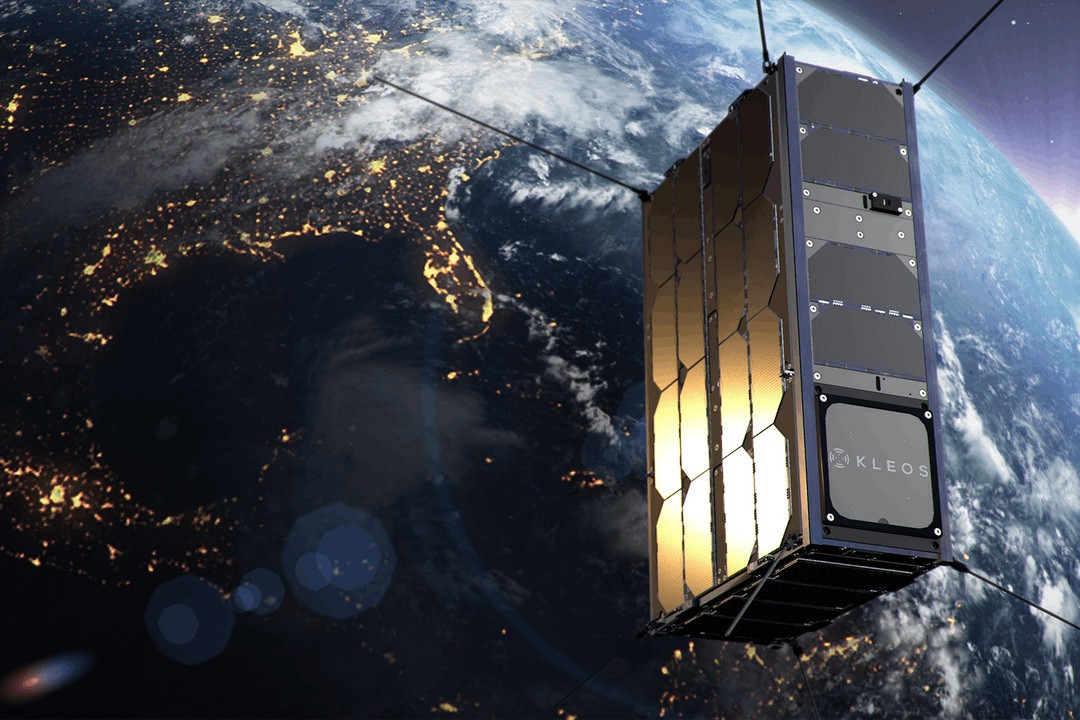Six years of existence and another loss-making year for Kleos. According to the space start-up’s , losses reached €7.3m in 2022, compared to €6.3m the previous year, €4.8m in 2020, €3.5m in 2019 or €2.2m in 2018, the first full year after its registration in June 2017.
Space startups are usually heavily indebted at the beginning of their journey, stuck financially between the technological development of their project and the difficulties of accessing public markets or assuring potential customers of the relevance of their technology.
The good news for Kleos is the prospect of multi-year contracts and therefore more regular and predictable revenues. “We’ll start to get them by the middle of next year,” reassures Kleos Space founder Andy Bowyer, who is still cautious with forecasts. “We should be at a point where we have known recurring revenues, long-term contracts, and then we can start forecasting accurately.”
“We are at an early stage, a startup stage,” he says. The company is “focused on making the investments necessary to build a successful business for the long term while aiming to achieve profitability as soon as possible. In addition, as Kleos wins contracts and its technology is operational, revenues are growing.”
The company’s revenue reached €272,099 in 2022, double its 2021 revenue. Revenue from the US and UK amounted to €125,528. Revenues in the first quarter of 2023, however, are four times higher than revenues for the last twelve months. Of the $1.6m (€1.46m) of revenue in the first quarter, €900,000 is considered non-recurring revenue, related to a government contract for which payment was received in 2022.
Cash flow
“2022 was another year of significant progress for Kleos,” says the executive chairman in the annual report. Pete Round cites “the launch of our Patrol Mission (KSF2) satellites, securing additional debt financing to support our expansion activities and other technologies, culminating in our first ‘product intelligence’, Locate, delivered to customers in late 2022.” “Data delivery is a critical milestone for Kleos as we enter our commercial operations phase. In early 2023, we confirmed our data delivery capability from our vigilance mission (KSF1).”
On the downside, cash flow fell to €1.7m at the end of 2022 from €5.7m, while operating expenses rose from €4.7m to €5.8m. As the accumulated losses “exceed three quarters of the share capital,” the auditor, EY, issued a warning. According to the auditors, a “significant uncertainty” could “cast doubt on the company’s ability to continue as a going concern.”
However, on 27 May 2022, the general meeting voted in favour of continuing the company. It’s a strategy that should not be disturbed by a worsening of the cash position at the beginning of April. From €1.42m on 31 March, it fell, at the beginning of April, below the €1.25m threshold, which it is not supposed to cross. This is a ‘breach of commitment’. No need to panic--the quarterly report explains that “operating cash flow should improve now that the satellite cluster is operational and customer contracts are in place.”
In addition to the significant additional revenues, the startup is expected to complete a new round of financing, expected this quarter, for an amount that the management did not wish to elaborate on.
Contracts and satellites
Kleos is particularly pleased with the award of a phase 2 contract with the US government agency and another with a British agency, as well as the continued delivery of data and the renewal of its spacecraft licence. “Kleos’ intelligence products are now delivered to government and commercial customers against a daily operational service level for a constant three months. Revenues are generated through the sale of subscriptions that license access to the intelligence data products. These are sold for between €300,000 and €500,000 per year.”
On the satellite constellation side, the vigilance mission (KSF1) is operational and in the data generation phase. Its remaining lifetime is estimated at 16 months, “in line with the design parameters.” The observation mission (KSF2) is expected to be operational in the third quarter of 2023, “after completion of an orbit raising manoeuvre to compensate for natural orbit degradation,” for a remaining lifetime of 30 months, which is also “compliant.”
The patrol mission (KSF3), launched this quarter, is expected to become operational early in the third quarter of 2023. “Although there has been a loss of communication with the KSF3-C satellite, the manufacturer is confident that it can be recovered with corrective measures. In the unlikely event that the satellite cannot be recovered, the revenue generating capabilities of the mission will not be affected. The mission is expected to continue for approximately 42 months, in accordance with its design parameters.”
A partnership agreement has also been signed with Ursa Space Systems, a global provider of satellite intelligence infrastructure, to join its global satellite image database.
“We remain committed to expanding our standard collection areas and increasing our customer base as we progress with our constellation deployment plan,” said Alan Khalili, the new CEO.
This story was first published in French on . It has been translated and edited for Delano.
